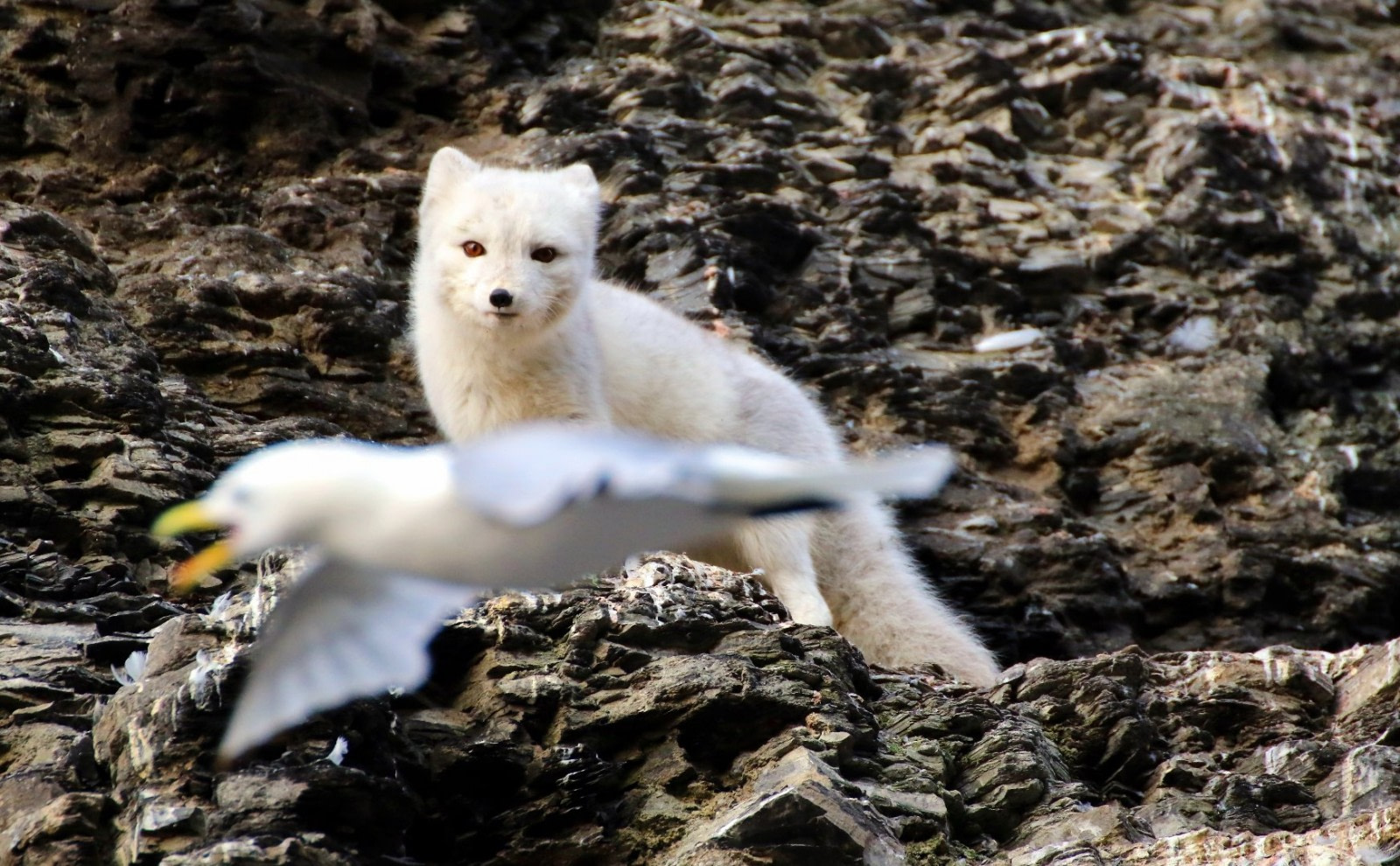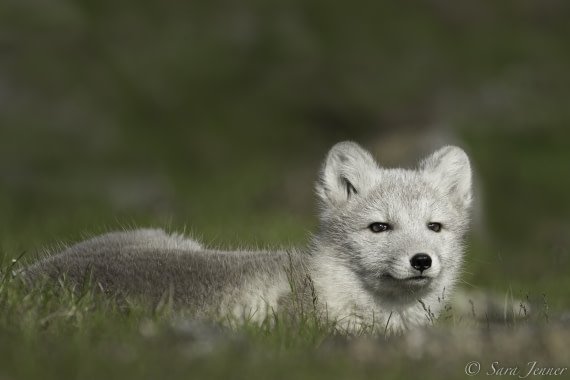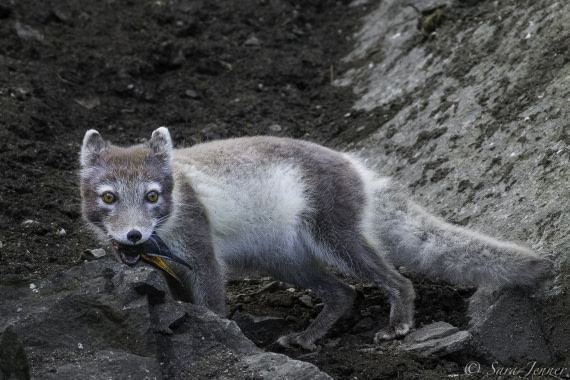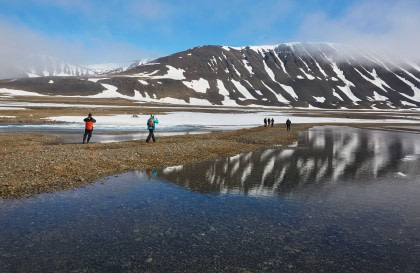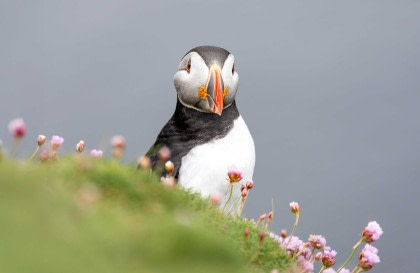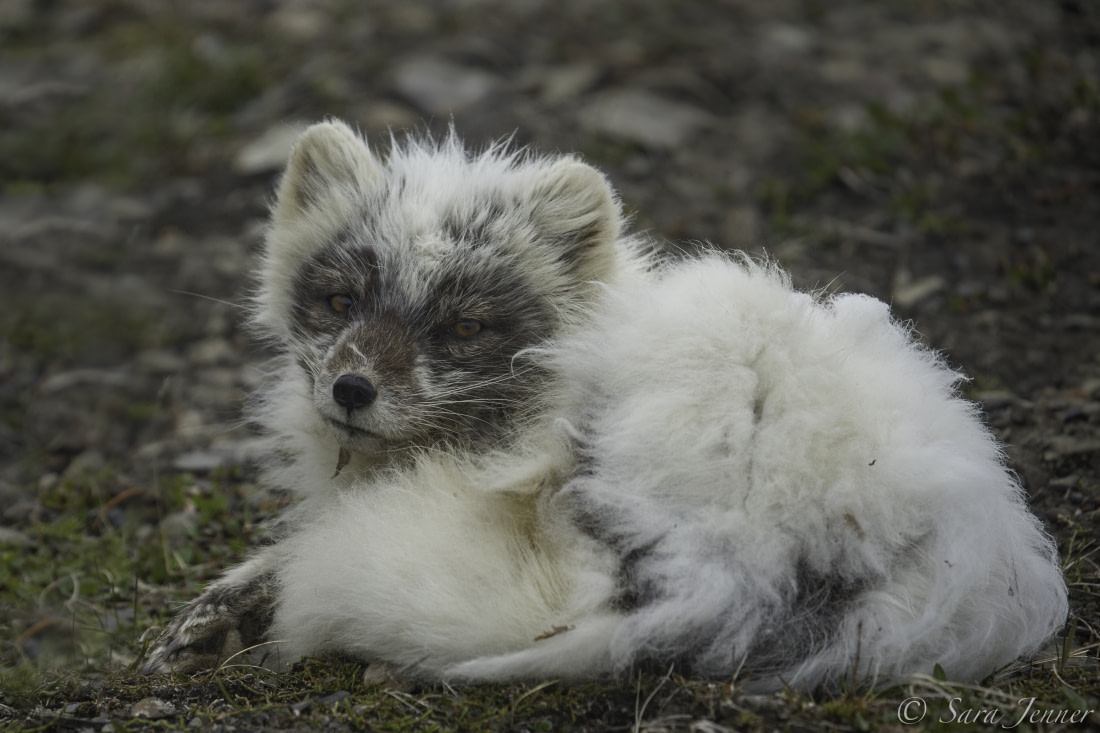Name: Arctic fox (also white fox, snow fox, polar fox) (Vulpes lagopus)
Length: 75 to 100 cm (2.4 to 3.3 feet)
Weight: 2 to 5 kg (5 to 11 pounds)
Location: Arctic
Conservation status: Least concern
Diet: Small animals, carrion, fish, birds, berries, seaweed, insects, eggs and small invertebrates
Appearance: Arctic foxes are white in winter and during the summer tend to have gray-brown backs, yellowish sides, and brown bellies with white spots. Around 3% of Arctic foxes are charcoal-colored all year long and are known as “blue foxes”, though this might be as high as 10% in Svalbard. This type was particularly valuable to historic trappers.
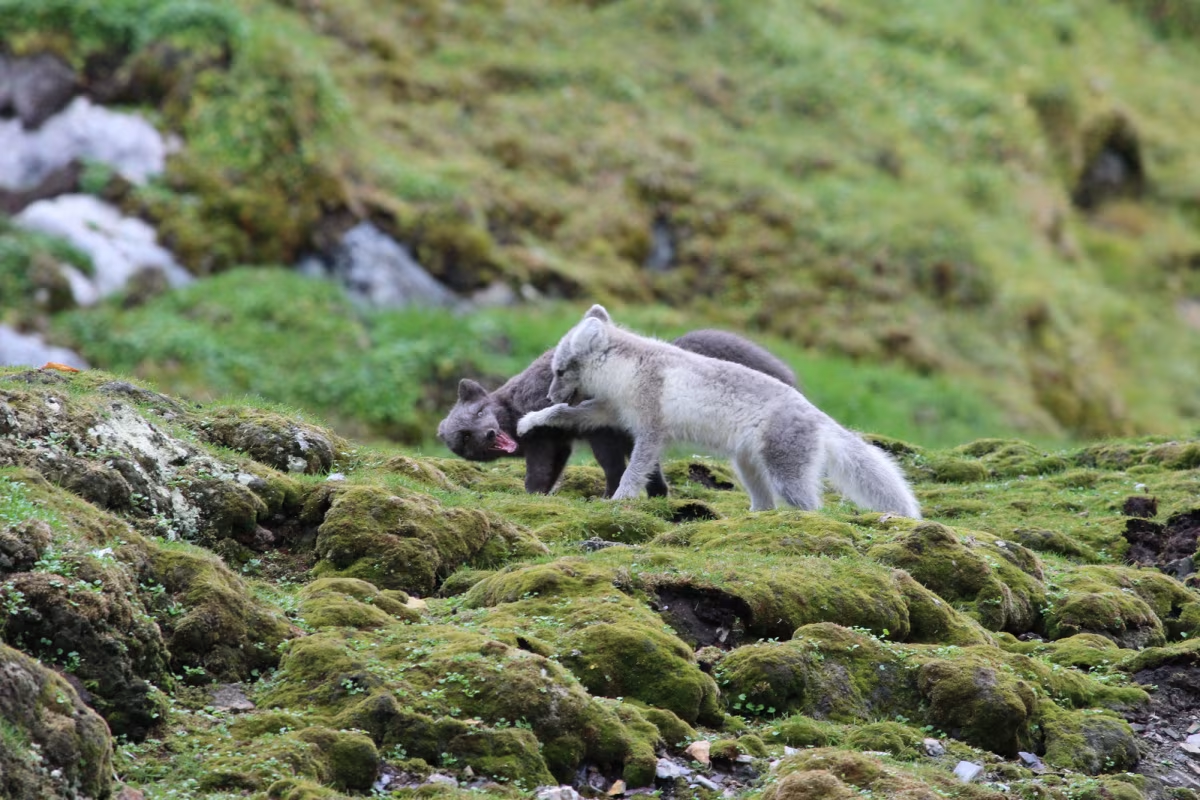
How do Arctic foxes hunt?
Arctic foxes eat just about anything they can get their paws on. During the summer, lemmings are often the main part of their diet, but Arctic foxes also go for birds, eggs, even seal pups.
The fact that Arctic fox coats change color all year round means they are always camouflaged and able to sneak up on prey. With their wide (but short) ears, Arctic foxes can hear prey moving even under snow.
Once they have located their next meal, Arctic foxes pounce straight into the air, then right down on top of their prey. In the fall, Arctic foxes work hard to store up body fat, increasing their weight by up to 50%.
During winter, when food becomes much more scarce, Arctic foxes often follow polar bears around, scavenging what they can from their leftover kills.

Do Arctic foxes socialize?
Arctic foxes are generally solitary creatures until they mate, which means their territory has fewer mouths to feed in the winter.
How fast can Arctic foxes move?
Arctic foxes can move fast when they want to, making short sprints of up to 50 kph (31 mph).
What are Arctic fox mating rituals like?
Arctic fox breeding season occurs from February to April, when they mate in monogamous pairs. Couples either dig out new dens or move into pre-existing ones.
These dens often contain a long network of tunnels covering as much as 1,000 square meters (3,280 square feet). Arctic fox pregnancies lasts about 52 days, after which litters of 5-10 offspring, called “kits,” are born.
Both mothers and fathers help raise the young. Kits first emerge from their dens about a month after being born and are weaned off their mother’s milk after a further four or five weeks.
How long do Arctic foxes live?
Arctic foxes generally live three to six years in the wild, though a 16-year-old individual was once recorded in Longyearbyen. Mortality in their first year can be as high as 75%.
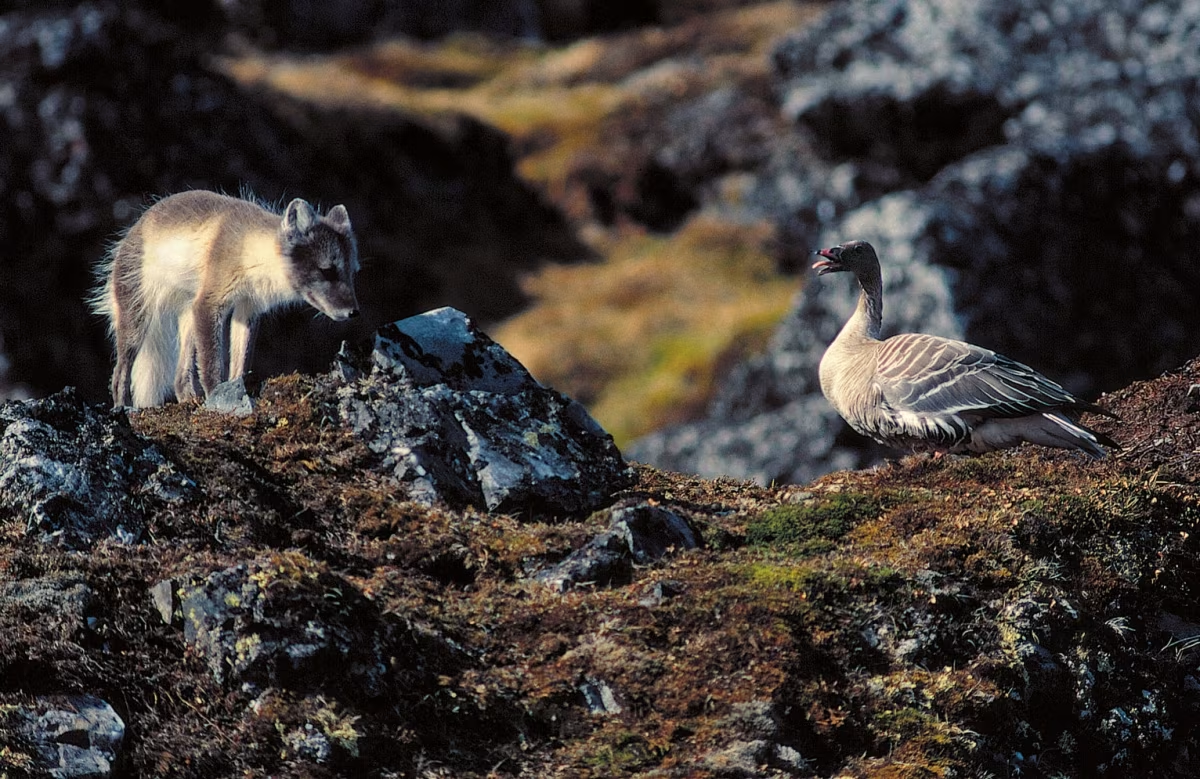
How many Arctic foxes are there today?
There is not a solid population estimate for Arctic foxes, though they are thought to be in the hundreds of thousands. Their population fluctuates depending on the availability of food sources, especially the lemming population.
Do Arctic foxes have any predators?
Grey wolves were traditionally the largest predator of Arctic foxes, but due to global warming, the territories of Artic foxes and red foxes are overlapping, causing a new and increasing threat to Artic foxes.
Artic foxes were also hunted by fur trappers due to their luxuriously warm and beautiful coats.

Seven fascinating Arctic foxes facts
- Arctic foxes have one of the warmest mammal furs in the world.
- Their legs are short and stubby, keeping them low to the ground and out of the cold Arctic winds.
- Arctic foxes have small noses, eyes, and ears as an additional caution against the cold.
- They have fur on the bottom of their feet, which keeps them from slipping on the ice.
- Arctic foxes are so well-adapted to handle the cold, they can endure temperatures as low as -50 °C (-58 °F) before their metabolism kicks in to heat their bodies.
- They are the smallest member of the canid family found in the Canadian wilderness.
- Arctic fox burrows can have dozens of entrances and sometimes house generations of foxes.
